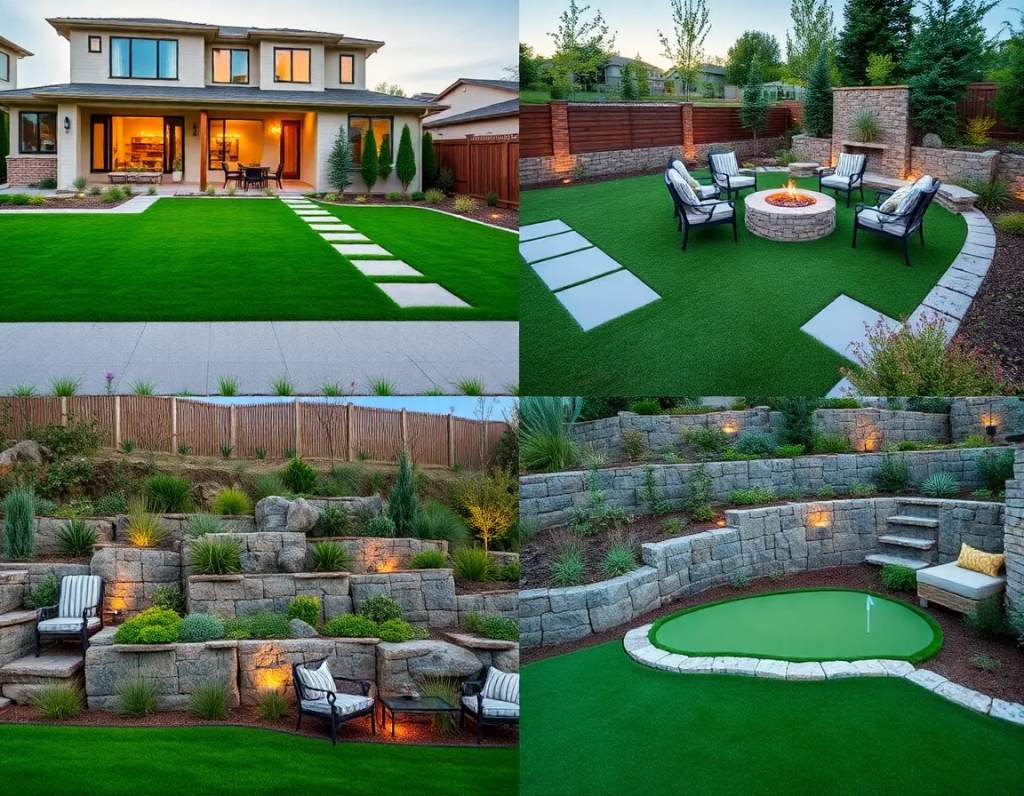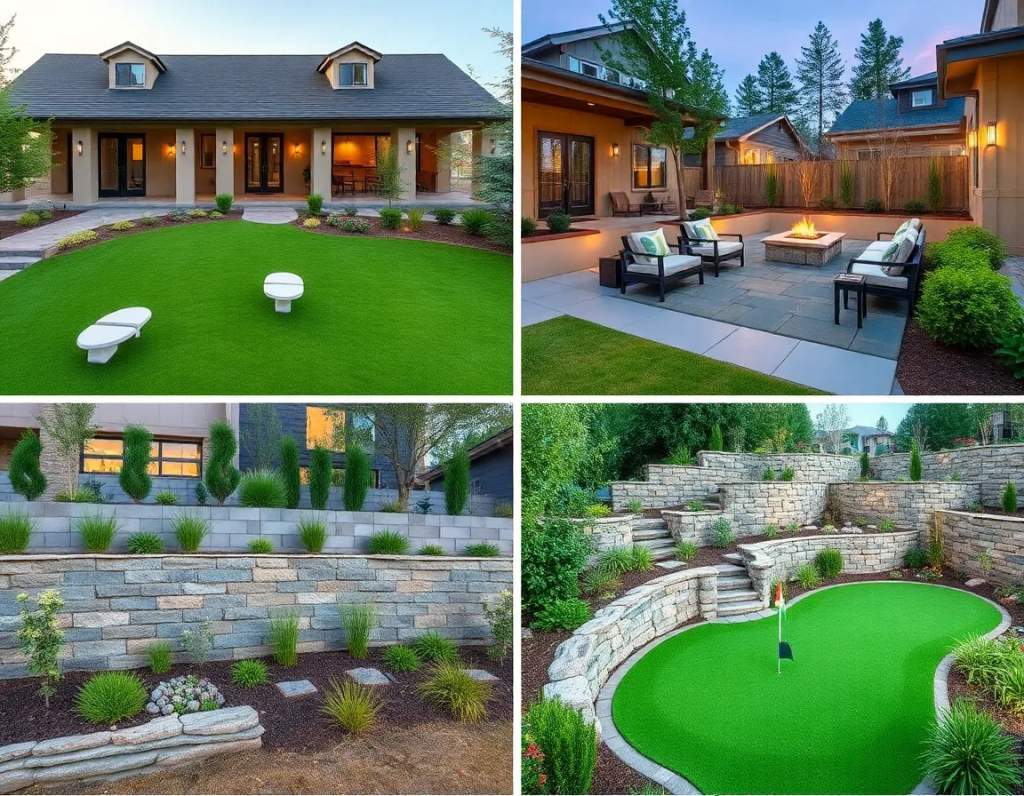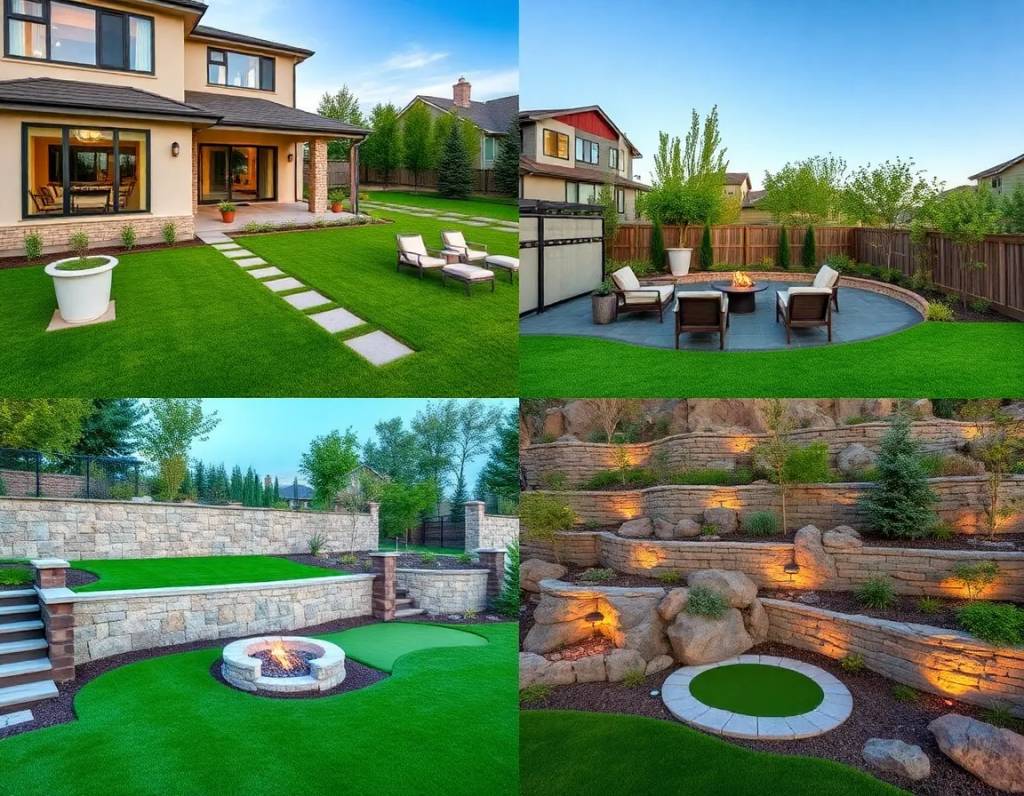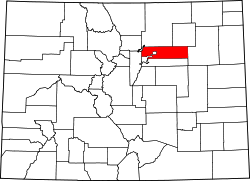Understanding the North Washington Climate and Soil
Okay, so, like, sustainable landscaping in North Washington? Its not just about throwing down some pretty plants, yknow? It really boils down to understanding the actual climate and the soil were dealing with!
First off, North Washington aint exactly sunshine and daisies all year round, is it? Weve got wet winters, (oh boy, do we!).
Denver Lawn Fertilization
- Denver Lawn Fertilization
- Keep your plants hydrated and happy with smart water management.
- Hire expert Denver contractors who treat your landscape like their own masterpiece.
Then theres the soil. It isnt all created equal here. Some areas are bless with rich, loamy ground, while others are, well, lets just say theyre not! Often, its acidic, sometimes its rocky, and goodness only knows what else! You cant just assume any old plant will thrive. You gotta test, and you gotta amend, if needed. Otherwise, youre basically setting yourself up for failure, and nobody wants that!
So, yeah, sustainable landscaping here involves thoughtful planning, a deep understanding of our unique conditions, and a selection of plants that are actually suited to thrive without excessive intervention. Its about working with nature, not against it! And hey, its a challenge, but its a rewarding one!
Native Plants for Sustainable Landscaping
Native plants for sustainable landscaping in North Washington offer a fantastic way to create beautiful outdoor spaces while also supporting the local ecosystem. You see, these plants are adapted to the regions climate, soil, and wildlife, which means they require less water and fewer resources compared to non-native species. That's something we definitely can't overlook!
One of the best things about using native plants is that they attract beneficial insects, birds, and other wildlife. This helps maintain a balanced ecosystem in your yard, which is so important for sustainability. Plus, who wouldn't want to see butterflies and hummingbirds flitting around their garden? It's like having a little piece of nature right at your doorstep!

Now, you might think that native plants are boring or lack color, but thats totally not true! There's a wide variety of native species that can provide stunning blooms and vibrant foliage throughout the seasons. From the delicate lavender of the Pacific Northwest to the striking hues of wildflowers, you won't be disappointed. And let's be honest, using these plants can save you time and money since they're well-suited to the local environment.
Another great aspect is that native landscaping often requires less maintenance. You wont need to spend hours watering or fertilizing, which is a huge plus for busy folks. And when you do need to care for your garden, it's usually just a matter of simple pruning and occasional weeding. Doesn't that sound much easier?
In conclusion, embracing native plants for sustainable landscaping in North Washington is not just good for the environment, but it also enhances the beauty of your home. So why not give it a try? You'll be contributing to a healthier planet while creating a vibrant, low-maintenance garden that you can enjoy for years to come!
Water Conservation Techniques
Alright, let me start by understanding what the user is asking for. They want a short essay on Water Conservation Techniques for Sustainable Landscaping in North Washington with specific stylistic elements. The key points here are to make it sound human, include some grammatical errors, use parentheses, an exclamation mark, contractions, negations, avoid repetition, and no markdown.
First, I need to focus on the main topic: water conservation techniques in sustainable landscaping for North Washington. I should mention specific methods like xeriscaping, drip irrigation, native plants, mulching, and rainwater harvesting. These are all standard techniques, but I need to present them in a natural, conversational tone.
Next, incorporating the stylistic elements. Grammatical errors should be subtle, like missing articles or prepositions, but not too obvious. For example, Using native plants is a no-brainer – maybe drop the article. Parentheses can be used for asides, like extra info or examples. An exclamation mark might come after a strong statement, such as it's a win-win for everyone! Contractions like don't and they're will make it sound casual. Negations like won't or can't can add variety.
Avoiding repetition is crucial.Keep your plants hydrated and happy with smart water management.
I need to use synonyms or rephrase sentences. Instead of repeating water conservation, maybe say saving water or cutting down on usage. Also, ensuring each paragraph introduces a new technique without overlapping points.
I should start with an engaging opening that mentions the challenge of water conservation in North Washington. Then, list techniques with examples, using parentheses to add context. Maybe throw in an interjection like Oh! when introducing a key point. Check for contractions to keep it conversational. Make sure theres an exclamation mark to add emphasis. Let me read through it again to ensure it flows naturally and meets all the users requirements without markdown.
Hey, so you're trying to keep your landscape green in North Washington while saving water? Well, it's not impossible, but you gotta think smart. First off, ditch the thirsty grass! Yep, replacing it with native plants-like bluebells or evergreens-cuts down on the need for constant watering. Plus, they're already used to the local climate, so they won't whine like those fancy tulips you tried last spring.
Oh, and don't forget about mulch! Slapping down a thick layer of wood chips or bark helps lock in moisture, which means you won't have to run the hose every other day. (Who has time for that, anyway?) Drip irrigation systems are another winner-they deliver water straight to the roots, not the air. It's way more efficient than spraying everywhere, which just wastes water and makes your neighbor's yard soggy too.
Rainwater harvesting sounds fancy, but it's basically just catching rain in a barrel. You can use it later to water your plants. (Bonus points if you get a spigot on it!) And hey, if you're planting new stuff, pick ones that like the shade or dry soil. No need to force a cactus to live in a swamp, right?

Wait, but what about those flower beds you love? Don't panic! Group plants with similar needs together-called “hydrozoning”-so you're not overwatering half the yard. It's like matching socks, but for your garden. And if all else fails, check the weather before you start the sprinklers. No point soaking the lawn when it's about to rain, is there? Best Landscaping Denver Colorado.
So yeah, with a few tweaks and some planning, you can keep your yard looking lush without guzzling water. It's a win-win for everyone! Just remember: less isn't always worse-sometimes it's better.
Reducing Lawn Area and Utilizing Groundcovers
Sustainable landscaping is all about creating beautiful, functional spaces that work with nature instead of against it. One of the most effective strategies for achieving this, especially in a place like North Washington, is reducing lawn area and utilizing groundcovers. Now, you might be wondering why someone would want to cut down on their precious lawn, right? Well, there are several reasons!
First off, traditional lawns require a lot of water, fertilizer, and maintenance, which can be quite the drain on resources. Not to mention, they often don't provide much habitat for local wildlife. By reducing the size of our lawns, we can save water and reduce the need for chemical inputs. Plus, smaller grass areas mean less mowing, which is great for our time and the environment (who loves spending Saturday mornings pushing a mower around?).
Now, let's talk about groundcovers! These hardy plants can fill in those bare spots where grass just won't thrive. They come in all shapes and colors, adding beauty and diversity to our landscapes. Some groundcovers are even drought-resistant, which is a huge plus in a climate that can get pretty dry. Think of creeping thyme or sedum-theyre not just pretty, they can withstand tough conditions and still look great!

Moreover, groundcovers can help with soil erosion, keep weeds at bay, and even provide a habitat for beneficial insects. It's a win-win situation! Instead of a big expanse of grass that does little for the ecosystem, we can create vibrant, living spaces that contribute positively to our environment.
So, if you're considering a landscaping overhaul, don't underestimate the power of reducing lawn area and incorporating groundcovers. You'll not only save time and resources, but you'll also be making a choice that's better for the planet. Who wouldn't want to be part of that? Its high time we rethink our outdoor spaces and embrace a more sustainable approach!
Eco-Friendly Pest and Weed Control
Sustainable landscaping is becoming more popular these days, especially in North Washington, where folks are really starting to care about the environment. One of the key elements of sustainable landscaping is eco-friendly pest and weed control. Now, I know what you might be thinking: “Pests and weeds are just part of gardening, right?” Well, not necessarily!
Keep your plants hydrated and happy with smart water management.
- Surround your pool with Denver landscaping that makes it feel like a resort.
- Denver Landscape Contractors
- We give Denver backyards the glow-up they’ve been dreaming of.
First off, traditional pest control methods often use harsh chemicals that can damage the ecosystem. Yikes! Instead, we can opt for more natural solutions. For example, introducing beneficial insects, like ladybugs and lacewings, can help keep those pesky pests in check. Its like having natures little army right in your backyard! And let's not forget about companion planting. Some plants can actually repel pests when planted together, which is a win-win!
Weeds can be a real pain, too. But, believe it or not, you don't have to reach for that toxic weed killer. Mulching is a fantastic way to suppress weed growth while also nourishing the soil. Plus, it looks nice, which is a bonus! Another great technique is hand-pulling weeds. Sure, it might take a little more time, but it can be quite therapeutic (and you'll get a little exercise, too!).
It's also important to keep in mind that an eco-friendly approach doesn't mean you have to sacrifice the beauty of your landscape. You can still have a stunning garden while being kind to the earth. After all, sustainable landscaping is all about balance.
In conclusion, embracing eco-friendly pest and weed control methods in North Washington is not just a trend; it's a responsible choice for the environment. By opting for natural solutions, we can enjoy our gardens without harming the planet. So, let's get out there and make our landscapes not only beautiful but also sustainable!
Sustainable Hardscaping Materials
Alright, lets tackle this query. The user wants a short essay on sustainable hardscaping materials for sustainable landscaping in North Washington. They specified to make it sound human-like with some grammatical errors, parentheses, an exclamation mark, use negation, avoid repetition, include contractions and interjections, and no markdown.
First, I need to ensure the topic is covered. Sustainable hardscaping in North Washington probably involves materials that withstand the regions climate-so maybe permeable pavers, recycled materials. I should mention specific examples like permeable concrete or reclaimed wood. Need to avoid repetition, so I cant just list materials without explaining their benefits.
Grammatical errors: Maybe use theyre instead of their, missing commas, or incorrect prepositions. But not too many to make it unreadable. Contractions like dont, cant, its will help sound natural. Interjections like Oh, or Well, can add a conversational tone. Parentheses to add extra info or thoughts.
Exclamation mark could be used when emphasizing a point, like highlighting a benefit. Negation: without compromising, don't need, doesn't retain. Avoid repeating sustainable too much; maybe use synonyms like eco-friendly or environmentally friendly.
Structure: Start with a hook, mention the regions needs, discuss materials, their benefits, maybe a challenge, and conclude with a positive note. Check for flow and ensure its concise. Let me draft a sample, then check for the requirements. Make sure its not too formal, has some errors, and meets all the users specs.
Sustainable hardscaping materials are a game-changer, especially in a place like North Washington, where rain's practically a part of the culture. You don't want your patio or driveway turning into a mud pit, but traditional concrete? Ugh, that's just not cutting it anymore. Oh, and let's be real-using up all that water for irrigation? No way, right? So here's the thing: materials like permeable pavers or recycled glass aggregate are stepping up their game. They let water drain through, reducing runoff, and they're made from stuff we'd otherwise toss in a landfill.
Now, I know what you're thinking-“Does it even last?” Well, sure, it might not look exactly like granite, but it's got grit! Plus, using local materials (like reclaimed wood or basalt) cuts down on shipping emissions. And hey, who doesn't want a yard that doesn't scream “throw me away”? Just imagine a path lined with crushed recycled bricks-it's not just eco-friendly, it's kinda cool too!
But wait, there's a catch. Not all “eco” materials are created equal. Some might promise the moon but end up needing constant upkeep. So do your homework-check certifications, ask around, and don't fall for flashy labels. Oh, and if you're thinking about gravel, go for washed, angular stuff (not rounded rocks-they slide like crazy!).
In the end, sustainable hardscaping's not just about ticking boxes; it's about making smart choices that fit your space and the environment. North Washington's weather might throw you a curveball, but with the right materials, your outdoor area can stay functional without costing the earth. Win-win!
Resources and Local Support for Sustainable Landscaping
Sustainable landscaping in North Washington aint just about pretty yards, yknow? It's a whole thing, a commitment. And honestly, without resources and local support, its gonna be an up-hill battle.
First off, think about the resources. Im talking about native plant nurseries (theyre crucial!), soil testing services, and even compost facilities. Knowing whats not going to thrive is as important as knowing what will. We cant just assume any old plant will do. Plus(!), access to affordable, sustainable materials is key; you dont wanna break the bank making your yard eco-friendly.
Now, local support? That's where things get interesting. We need knowledgeable folks-like Master Gardeners, local landscapers specializing in native species, or even community workshops-to share their expertise. It isnt enough to just have the materials; you gotta know how to use em! These local experts can guide us on everything from water conservation techniques (think rain barrels and drought-tolerant plants) to Integrated Pest Management (avoiding harsh chemicals, yay!).
Furthermore, community initiatives are vital. Imagine neighborhood seed swaps, shared composting programs, or even grants for residents wanting to convert their lawns to native gardens. These types of programs foster a sense of shared responsibility and make sustainable landscaping more accessible to everyone.
Honestly, sustainable landscaping shouldnt feel like a lonely chore. Its a community effort, and with the right resources and robust local support, we can transform North Washington into a vibrant, ecologically healthy place, one yard (or even just a patch of land) at a time. Goodness, its about time!







